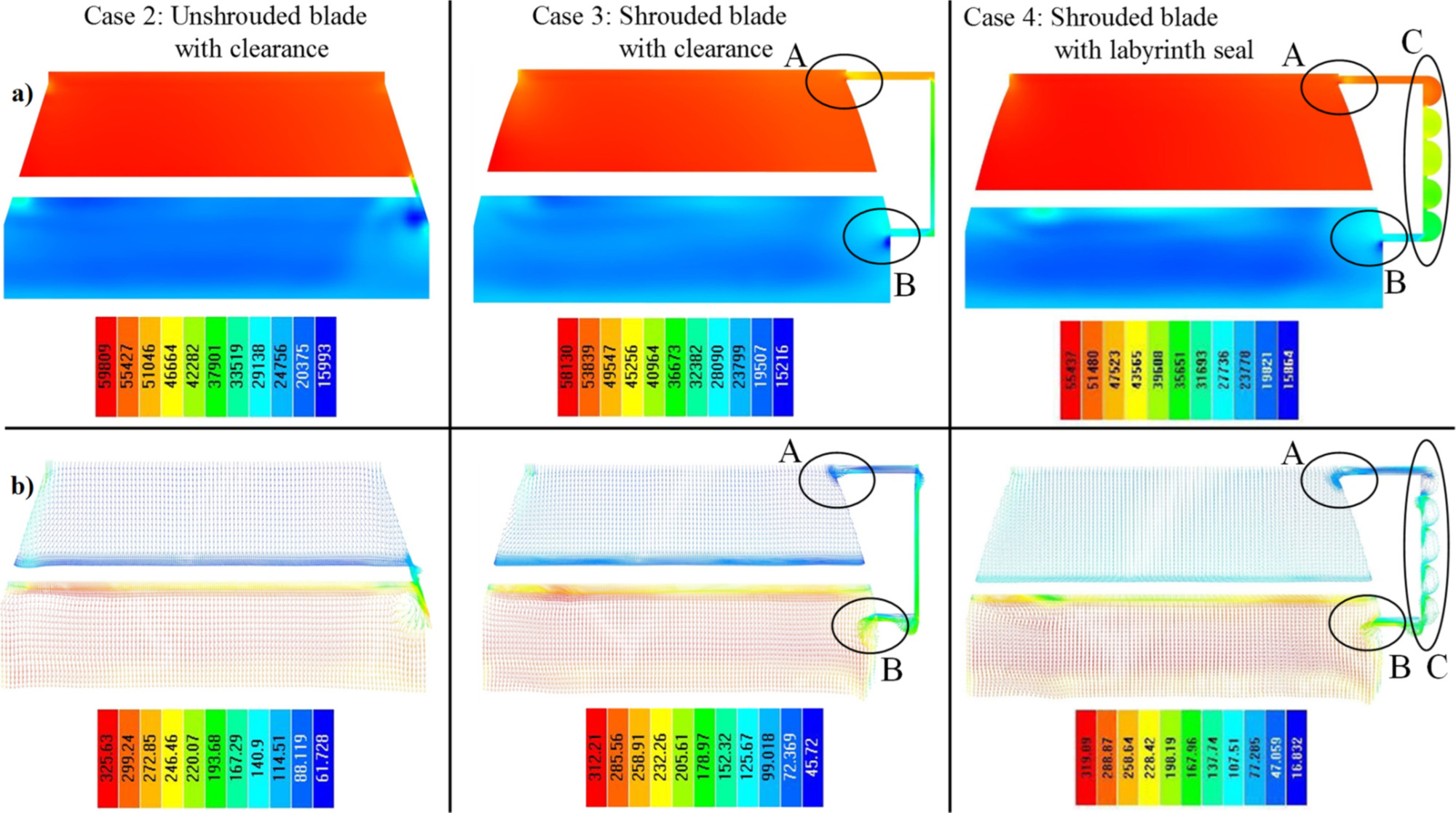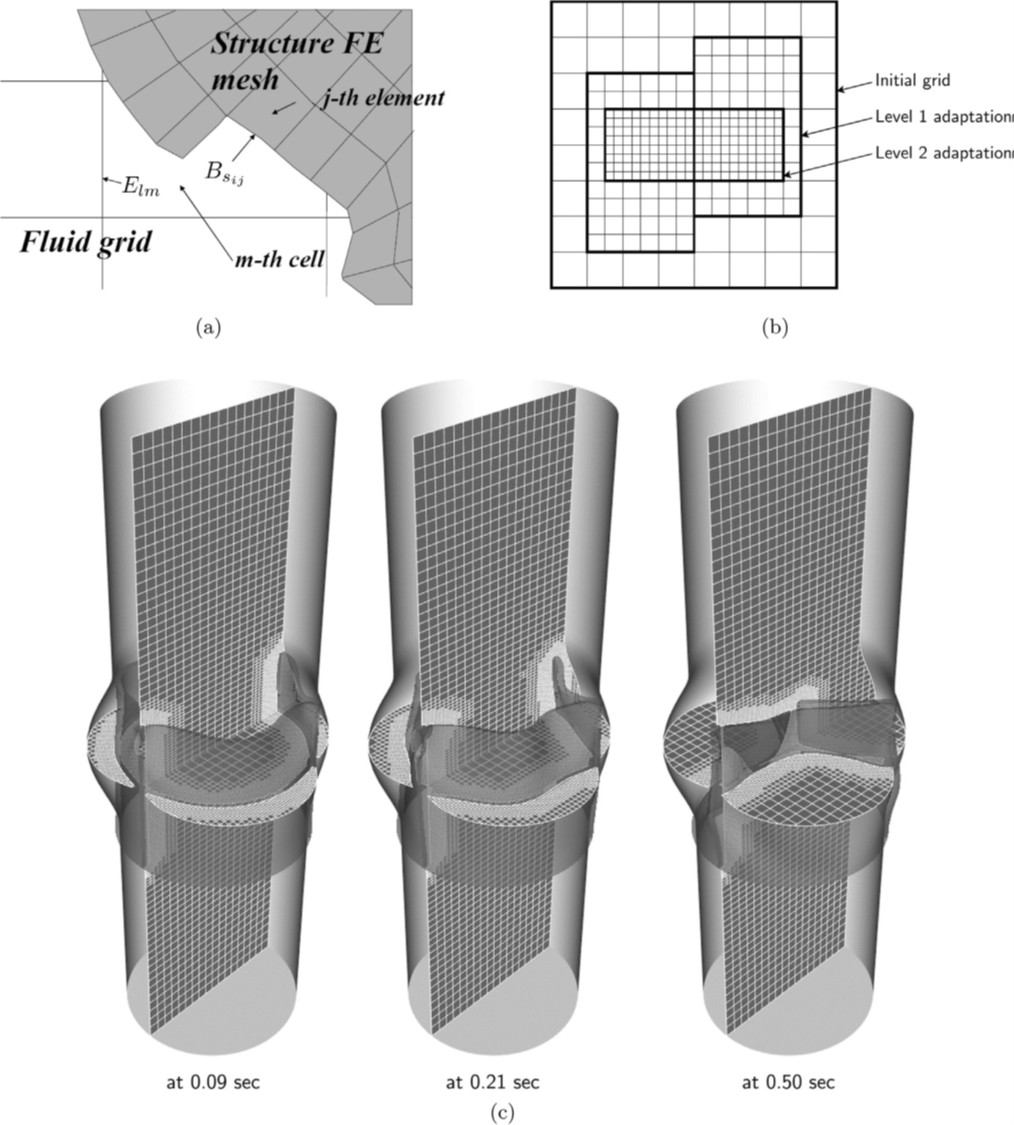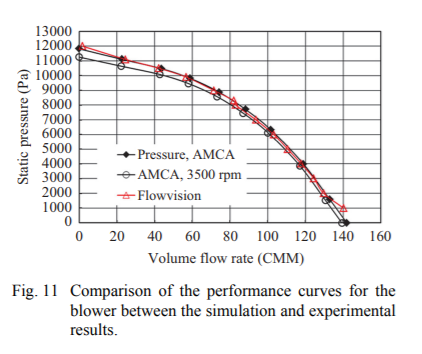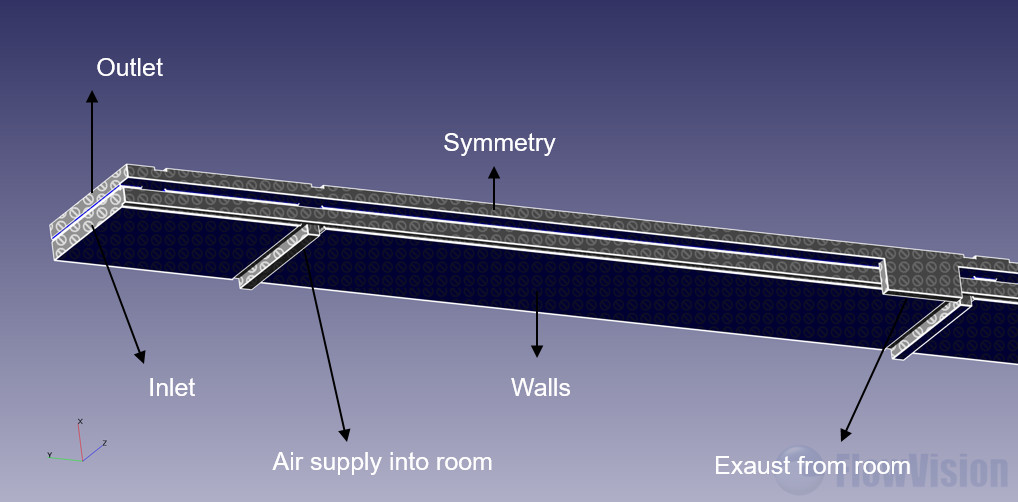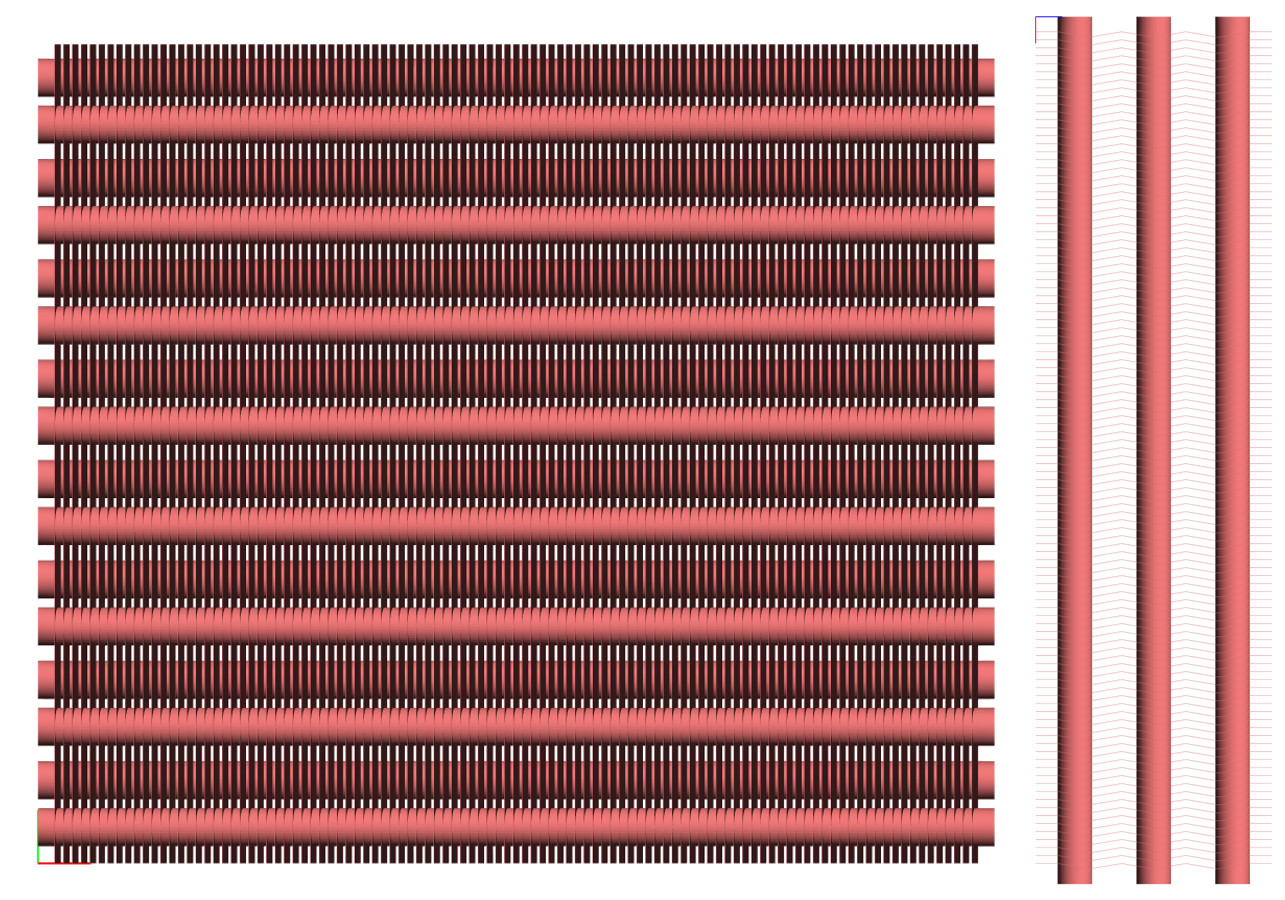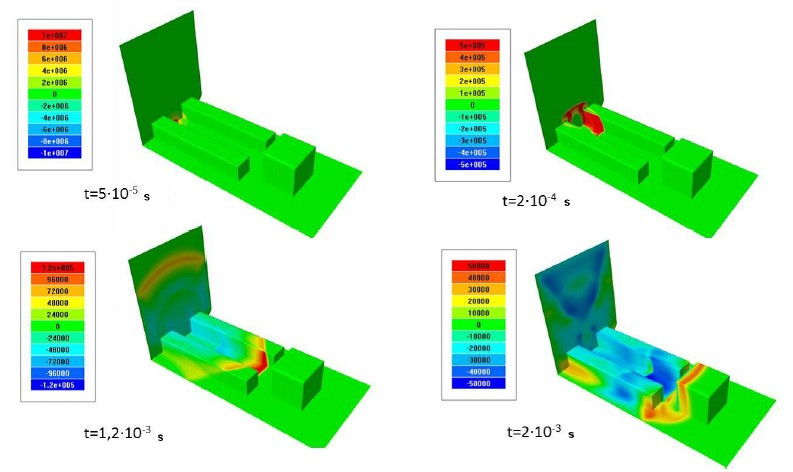Transcatheter aortic valve replacement (TAVR) has emerged as a life-saving solution for inoperable elderly patients with end-stage calcific aortic valve (CAV) disease [1]. However, valve migration, paravalvular leakage (PVL), and thrombogenic potential may limit its expansion into younger, lower-risk patients [2]. Previous numerical studies attempted to address these complications but neglected the valve post-deployment performances during heart beating [3]. This study utilizes Simulia Living Heart Human Model (LHHM) heart beating capabilities coupled with a fluid-structure interaction (FSI) simulation to evaluate TAVR complications.
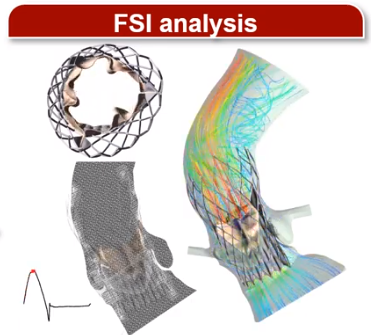
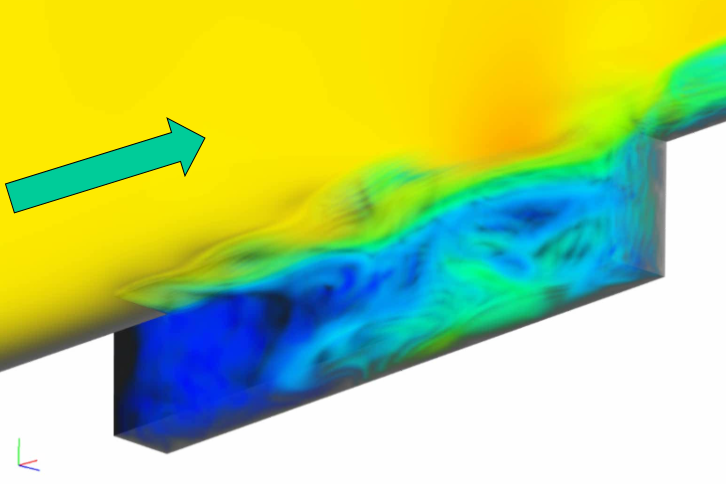
Scalability of computations in the FlowVision CFD software on the Angara-C1 cluster equipped with the Angara interconnect is studied. Different test problems with 260 thousand, 5.5 million and 26.8 million computational cells are considered.
In this study, blade tip leakages were calculated for aIn this study, blade tip leakages were calculated for a Radial Outflow Turbine (ROT) designed for an Organic Rankine Cycle (ORC) at a 150kW power output. Since the turbine blade sizes are relatively very small for low-capacity systems, the leakages through the blade tip clearance considerably affect the turbine isentropic efficiency. Therefore, labyrinth seals were applied at the blade tips and the ROT’sperformance degradation due to blade tip leakages was investigated. In order to determine the preliminary ROT sizes, an in-house developed 1-D code was utilized.
Prosthetic heart valves deployed in the left heart (aortic and mitral) are subjected to harsh hemodynamical conditions. Most of the tissue engineered heart valves have been developed for the low-pressure pulmonary position because of the difficulties in fabricating a mechanically strong valve, able to withstand the systemic circulation. This necessitates the use of reinforcing scaffolds, resulting in a tissue-engineered textile reinforced tubular aortic heart valve.
Cardiovascular disease is the leading cause of death in developed Cardiovascular disease is the leading cause of death in developed nations and imposes a high socioeconomic cost. In 2014, Dassault Systemes launched the Living Heart Project to harness the power of realistic simulation to tackle the problem of cardiovascular disease. The cornerstone of the project is the Living Heart Model (LHM), an anatomically and physiologically realistic model of a human heart that can be used for in silico diagnosis and treatment of cardiovascular disease. In this paper, we describe applications of the model in medical device design, drug safety, and patient care.
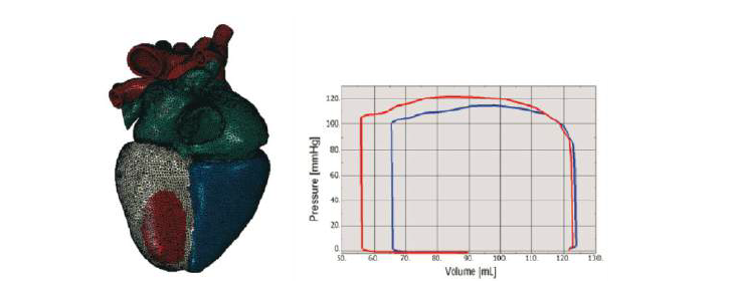
Cardiovascular disease remains the leading cause of death in Cardiovascular disease remains the leading cause of death in developed countries. After the introduction of stents in the 1980s mortality rates declined, yet those gains have since plateaued, signaling the need for a new generation of treatments that are safer and more effective. To achieve this goal, it is important to understand both the physical device-body interaction as well as the physiological changes induced by the device.
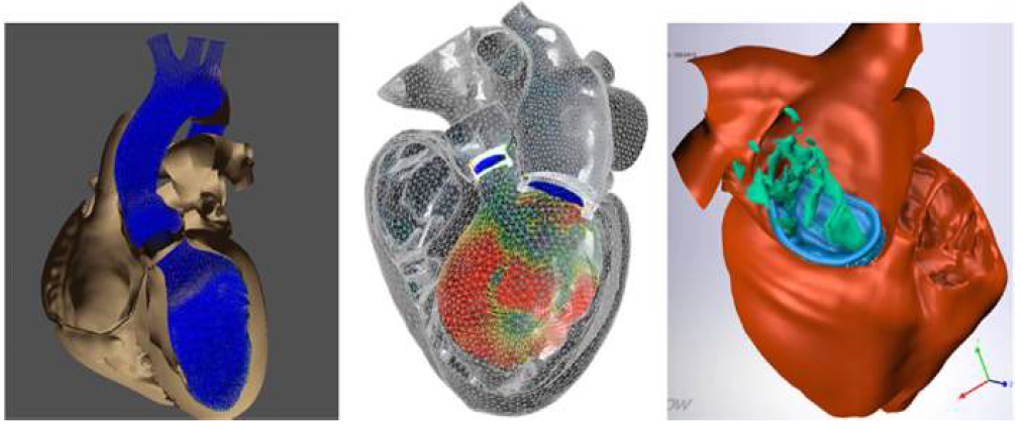
Computational tools are uniquely capable of accounting for cardiac/vascular tissue mechanics, blood flow, and the interaction between them, yet are currently under-utilized due to their complexity. The SIMULIA Living Heart Model (LHM), an anatomically and physiologically realistic 3D model of a human heart, provides a platform to better understand the human heart in healthy and diseased states as well as to improve the efficacy of cardiovascular medical devices and to guide the clinical treatment of heart disease. In this paper, we focus on the modeling of blood flow which encompasses a wide variety of conceptual and technical approaches. These range from 0D/1D lumped parameter models (LPMs) of the cardiovascular system to highly detailed 3D fluid-structure interaction (FSI) co-simulations.Using applications from medical device design and patient care, we discuss best practices in the context of the problem being modeled and the level of accuracy desired.
As the consciousness of energy saving and carbon reduction and comfortable environment is paid increasing attention to, the common objective of various countries with decreasing energy is to develop and popularize high efficiency and low running noise blowers. This study uses CFD to calculate the flow field and performance of a blower and compare with the experimental measurement.
The characteristic curve of blower shows that the simulated and experimental values are close to each other, the difference between the values is only 0.4%. This analysis result proofs the CFD package is a highly reliable tool for the future blower design improvement. In addition, this study discusses the noise distribution of blower flow field, the periodic pressure output value calculated by CFD is used in the sound source input of sound pressure field, so as to simulate and analyze the aerodynamic noise reading of the flow field around the blower. The result shows that the simulated value of flow field around the fan has as high as 80.5 dB(A) ~ 81.5 dB(A) noise level and is agree with measurement (82 dB(A)). The noise level is low but has a sharp noise. According to the numerical results, designer of the blower modify the tongue geometry and remove the sharp noise.

The paper is devoted to the mathematical modeling of the dynamics of geophysical flows on mountain slopes, e.g., rapid landslides, debris flows, avalanches, lava flows, etc. Such flows can be very dangerous for people and various objects. A brief description is given of models that have been used so far, as well as of new, more sophisticated, models, including those developed by the authors. In these new models, nonlinear rheological properties of the moving medium, entrainment of the underlying material, and the turbulence are taken into account. The results of test simulations of flows down long homogeneous slopes are presented, which demonstrate the influence of rheological properties, as well as of turbulence and mass entrainment, on the behavior of the flow.
Buildings are responsible for the significant amount of energy consumption and C02 emission. Obviously, façades are the most important building element considering energy consumption, environmental effects and user’s comfort. Therefore, different design strategies are being developed according to different climatic zones for sustainable, energy-efficient, high-performance buildings. Buildings are responsible for the significant amount of energy consumption and C02 emission.
Obviously, façades are the most important building element considering energy consumption, environmental effects and user’s comfort. Therefore, different design strategies are being developed according to different climatic zones for sustainable, energy-efficient, high-performance buildings. Today, different systems such as double-wall façades, ventilated windows, solar and green walls are already being used in building envelopes. The first priority of these systems is decreasing energy consumption by utilization of natural ventilation and solar energy. Such systems operate independently from the central HVAC systems; hence, do not reduce the installation cost of mechanical works. Moreover, their investment, operating, maintenance and cleaning costs are very high compared to conventional facade systems. Therefore, innovative and low-cost façade systems, which are responsible for less energy consumption, continue to be the subject of research. In this study, a newly developed façade system is discussed.
In the air conditioning sector, batteries are essential equipment. For this reason, they are included in almost every analysis. In many cases, we need accurate solutions to make changes on our HVAC unit design. CFD analysis can show us internal pressure loses and other air flow characteristics of an HVAC unit. During the design process, we make many changes on the unit design. At this point, CFD analysis provides us an economical solution for testing our preliminary designs before the final design. For this reason, we need to create the correct model for coils in our CFD analysis.
In CFD analysis meshing a coil's real geometry is a very expensive job. You have to create a very dense mesh between coil's lamellas. Creating a dense mesh extends the solution time and consumes too much system resources but it gives more accurate solutions. If you don't have enough system resources then you should try porous medium definition for the coil. For porous medium definition, neither a dense mesh nor a high system resource is necessary. In many cases, porous medium definition works well if you can define the coil's volume resistance correctly in three dimensions. Porous medium solutions are less accurate than real geometry solutions. Here we must make a decision between accuracy and resources. The third option is FlowVision's unique feature named "Gap Model" which provides the real geometry solutions without the need for dense meshing. Current study covers comparison of these three different coil definitions according to their positive and negative aspects.
CFD calculations of NREL Phase VI rotor under wide range of operation conditions were conducted using FlowVision software. Computations were performed for various wind speeds with axial inflow, constant RPM and constant blade pitch. The rotation of the blades was modeled via different approaches; steady-state with frozen rotor using rotating reference frame and transient with moving boundaries or sliding surfaces. In addition to this, an ‘Overlapping Boundary Layer (OBL)’ was implemented to resolve the boundary layer for a selected case. Turbulence models ‘k-ε-AKN and k-ω Shear Stress Transport (SST) were used and compared. Except the OBL case, FlowVision wall function approximation was employed for all calculations with y+ values between 30 and 100.

Overall results were compared for all of the above-mentioned numerical approaches and showed good agreement with the experimental data. k-ω SST turbulence model is found to perform better to predict stall onset. The stall occurrence and general torque trend as a function of wind speed is fairly well captured. Comparisons of the static pressure distribution around blades with experimental data at different span-wise sections for different wind speeds are presented and good agreement is observed.
In the present paper the simulation of the explosion of condensed explosives in the air. The method used simulation by specifying the scope of compressed gas as the point source of the explosion. Describes the behavior of the blast wave on the middle and far distances from the source of the explosion, in which a pressure profile does not depend on the geometry of the source. The paper proposed to develop a method scope of the compressed gas provides the account properties of the products of the explosion for any explosive composition. Numerical investigation of the explosion of an explosive charge in the open countryside, in the presence of walls and rigidly fixed in the model of the urban environment. Shown good agreement with the experimental results and the peak pulse pressure both direct and reflected waves in each of the above cases.
